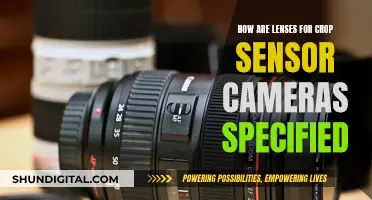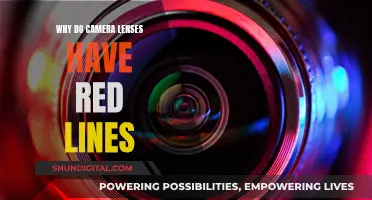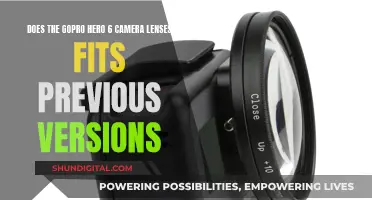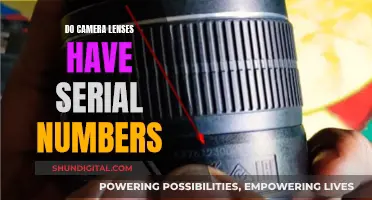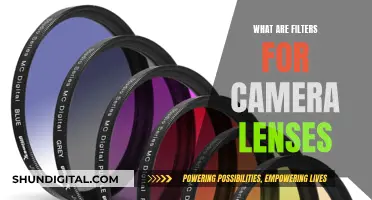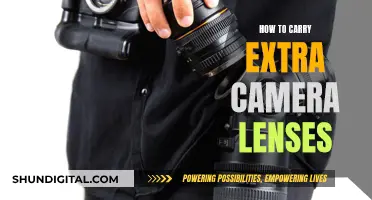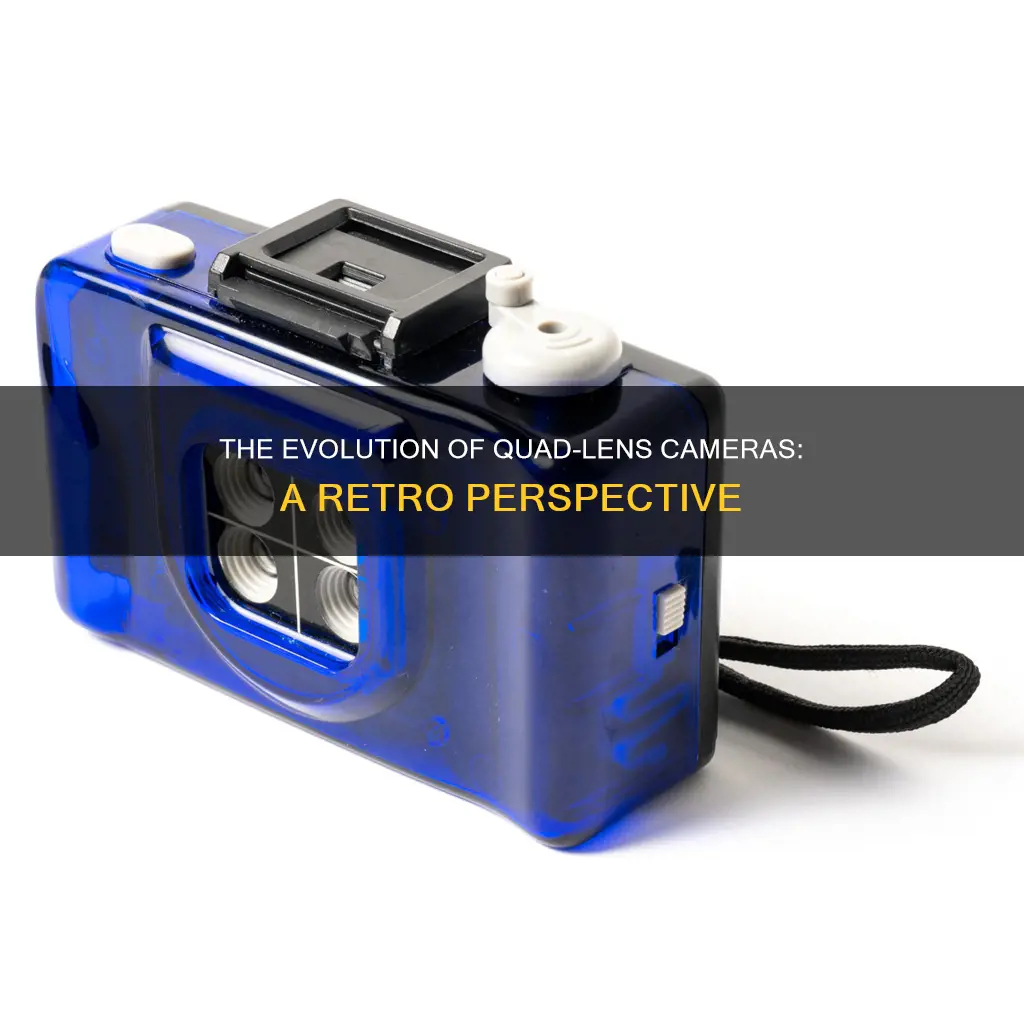
The use of four lenses on old-style cameras was a common feature in vintage film cameras, particularly those used for filming movies and TV shows. This setup, known as a lens turret, allowed for quick changes in focal length, enabling seamless transitions from wide shots to close-ups without the need for individual lenses. The absence of zoom lenses during the early days of filming made this configuration popular, as it offered convenience and flexibility to camera operators.
While only one lens was active at a time, having multiple lenses mounted on the camera eliminated the need to carry and manually switch lenses, making it a practical solution for the time. This design was also utilised in enlargers, astro photography, and filter systems.
The evolution of camera technology, particularly the introduction of zoom lenses, eventually rendered the four-lens setup less common. However, the concept of multiple lenses in a rotating configuration continues to be explored and adapted for modern photography and cinematography.
| Characteristics | Values |
|---|---|
| Reason for 4 lenses | Zoom lenses were not available at the time. |
| Reason for 4 lenses | It was easier to have them all mounted like that, rather than individually carrying around 4 separate lenses and changing them by hand. |
| Reason for 4 lenses | Zoom technology was not available at the time. |
| Reason for 4 lenses | It was common in old TV shows. |
What You'll Learn
- Zoom technology was not available when old-style cameras with four lenses were in use
- Only one lens was operational at a time, with the ability to rotate the turret to move a different lens into place
- Old-style cameras with four lenses were common in old TV shows
- Old film SLR lenses will zoom in further on most digital SLRs, which is a problem for landscape photographers and real-estate agents
- It is possible to use old film camera lenses on a new digital camera, especially mirrorless cameras

Zoom technology was not available when old-style cameras with four lenses were in use
The introduction of zoom technology in the 20th century revolutionized photography and cinematography. The ability to vary the focal length of a lens offered unprecedented flexibility in framing and composition. However, the early zoom lenses often produced mediocre or poor image quality, particularly in still photography. It was only in the latter part of the century that zoom lenses began to match the image quality of prime lenses.
The development of zoom technology had a significant impact on the design of cameras and lenses. The convenience of zoom lenses made them highly desirable, and they gradually replaced the four-lens cameras and other fixed focal length systems. The evolution of zoom lenses also influenced the creation of new lens mounts and camera systems, as manufacturers strived to enhance compatibility and performance.
Today, zoom lenses have become an integral part of photography and videography. Technological advancements have resulted in zoom lenses with improved image quality, faster apertures, and greater versatility. The convenience and flexibility offered by zoom lenses have made them a standard feature in modern cameras, ranging from amateur to professional models.
While the four-lens cameras may seem like a relic of the past, they represent the ingenuity and resourcefulness of photographers and filmmakers in the pre-zoom era. The limitations of fixed focal length lenses spurred the development of innovative solutions, such as the lens turret, to meet the creative and practical demands of image capture.
Understanding Camera Lenses: What Does 'MM' Mean?
You may want to see also

Only one lens was operational at a time, with the ability to rotate the turret to move a different lens into place
Old-style cameras with four lenses used a mechanism called a lens turret, which allowed the user to rotate the turret to move a different lens into place. This meant that only one lens was operational at a time. The benefit of this system was that it was easier to have all four lenses mounted on the camera, rather than having to carry around four separate lenses and change them by hand.
Lens turrets were common in old TV shows, allowing for quick switches from wide shots to close-ups. They were also used in early filming, as zoom lenses were either not available or not very good. In addition, cameras before the 1940s/1950s were not equipped with a reflex system, so the camera operator had to move the camera from right to left to focus.
Lens turrets were not limited to cameras; they were also used in astronomy as filter turrets.
Renting Camera Lenses in NYC: Best Places to Go
You may want to see also

Old-style cameras with four lenses were common in old TV shows
The use of multiple lenses was also advantageous because it eliminated the need for camera operators to carry around multiple separate lenses and change them manually. Additionally, these cameras were highly sensitive to burn-in, necessitating even lighting conditions or the use of massive highlights that would shimmer and sometimes invert to black. This peculiar behaviour of the cameras further highlights the unique challenges faced by early television crews.
While these four-lens cameras may seem like a relic of the past, the concept of lens turrets lives on. Leica, for instance, produced a lens turret for photography, and similar designs are used in astronomy and filmmaking. The appeal of adapting old lenses to modern cameras also persists, with photographers and filmmakers seeking the unique optical characteristics and vintage look that vintage lenses offer.
Veronica Mars' Camera Lens: Uncovering the Mystery
You may want to see also

Old film SLR lenses will zoom in further on most digital SLRs, which is a problem for landscape photographers and real-estate agents
Old film SLR lenses will zoom in further when attached to most digital SLRs. This is because digital SLRs only see the centre half of the picture. This is rarely a problem for long zoom lenses, as they will zoom even further on a digital SLR. However, it is a problem for landscape photographers and real-estate agents who need wide-angle lenses, as the lenses won't see as wide as they did before.
The issue of old film SLR lenses zooming in further on digital SLRs is due to the difference in technology between film and digital cameras. Digital SLRs have a smaller image sensor than film cameras, which results in a crop factor that effectively reduces the field of view and increases the focal length of the lens. This is known as the "crop sensor effect" and can be advantageous for some types of photography, such as wildlife or sports photography, where the extra reach is beneficial.
However, for landscape photographers and real-estate agents, the crop sensor effect can be detrimental as it reduces the wide-angle capabilities of the lens. This is because the lens will not be able to capture as much of the scene in a single frame, requiring the photographer to take multiple shots and stitch them together to create a panorama, or use a wider lens to achieve the desired field of view.
To address this issue, most camera manufacturers now produce lenses specifically designed for digital SLRs, which offer a wider field of view to compensate for the crop factor. Additionally, some camera brands have introduced full-frame digital SLRs that utilise a larger image sensor, similar in size to a frame of 35mm film, thus eliminating the crop factor and allowing old film SLR lenses to perform as intended.
It is worth noting that the compatibility of old film SLR lenses with digital SLRs also depends on the camera brand. Some companies have changed the way their lenses and cameras fit together, so older lenses may not fit properly or may not function as expected. It is always recommended to refer to the camera and lens manuals before attempting to use old lenses on new camera bodies to avoid any potential damage.
The Intricate Art of Assembling Camera Lenses
You may want to see also

It is possible to use old film camera lenses on a new digital camera, especially mirrorless cameras
Another challenge is compatibility. Old film camera lenses are rarely natively compatible with newer camera equipment. For example, a modern mirrorless camera and a 30-year-old film lens have different mounts and are not designed to fit together. Attempting to force the fit can damage both pieces of equipment. However, this issue can often be overcome with the use of adapters.
Adapters are available for virtually every lens and camera combination, allowing you to connect old film camera lenses to new digital cameras, including mirrorless models. These adapters are typically made of aluminium and can be sourced online or from camera stores. While adapters enable the physical connection, they do not enable electronic communication between the lens and camera. As a result, features like autofocus and automatic metering may still be unavailable, even with an adapter.
It is important to note that using old film camera lenses on new digital cameras may also affect image quality. Digital camera sensors have glass in front of them, which was not present with film. This glass slightly changes the path of the light, degrading the edges of the image, especially when using lenses designed for film. The impact of this issue varies depending on the thickness of the sensor stack and the lens' exit pupil distance.
When considering using old film camera lenses on a new digital camera, it is crucial to consult the relevant manuals and be cautious to avoid damaging your equipment. While it is possible to adapt and use these lenses, there may be limitations and challenges that affect your photography experience and image quality.
Camera Lenses: Do They Have an Expiry Date?
You may want to see also
Frequently asked questions
Old-style cameras had four lenses because they were fixed focal length lenses, meaning they did not have zoom capabilities. To achieve a zoom effect, multiple lenses with varying focal lengths were used. This allowed for quick changes in perspective, from wide shots to close-ups, without the need for changing lenses manually.
One challenge is that old film lenses tend to zoom in further when attached to most digital SLRs, as digital SLRs only capture the centre portion of the image. This can be problematic for applications requiring wide-angle lenses, such as landscape photography or real estate photography. Additionally, manual focus lenses from film cameras can be difficult to use on digital SLRs due to smaller and dimmer viewfinders.
Vintage lenses often possess unique optical characteristics that are challenging to replicate with modern lenses. They can create a "vintage look" in photographs or cinematography that is sought after by many artists. Additionally, vintage lenses can be acquired at much lower costs compared to modern lenses, making them an affordable option for photographers and filmmakers.


